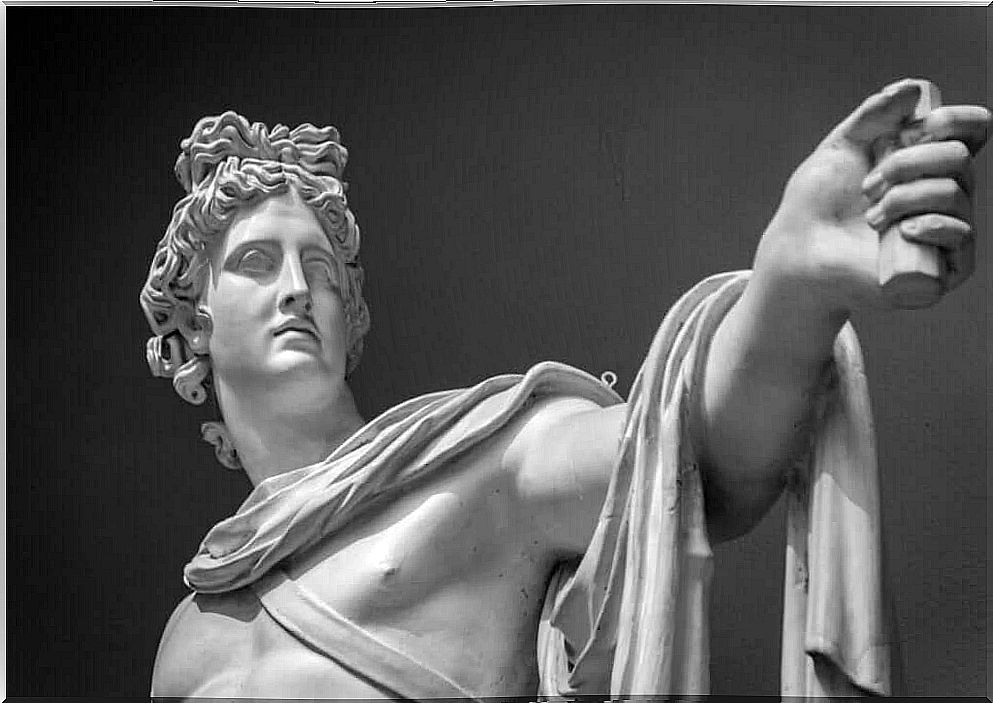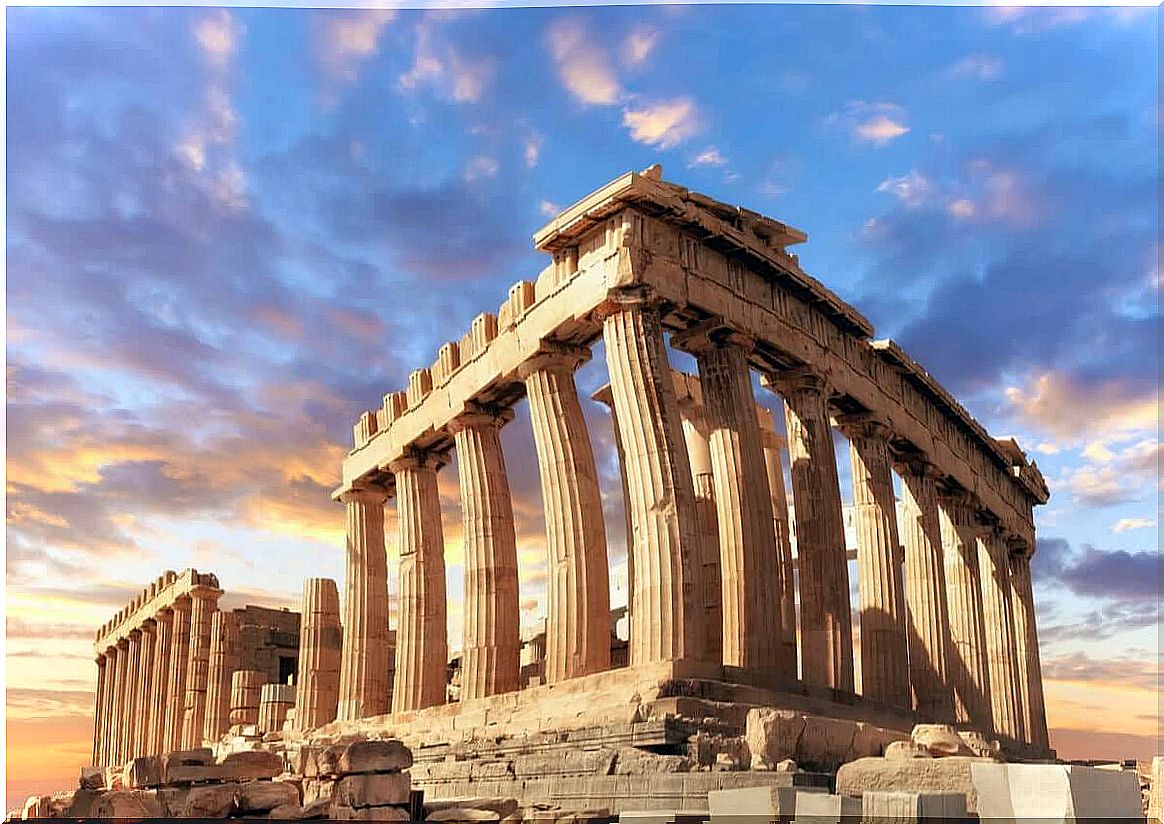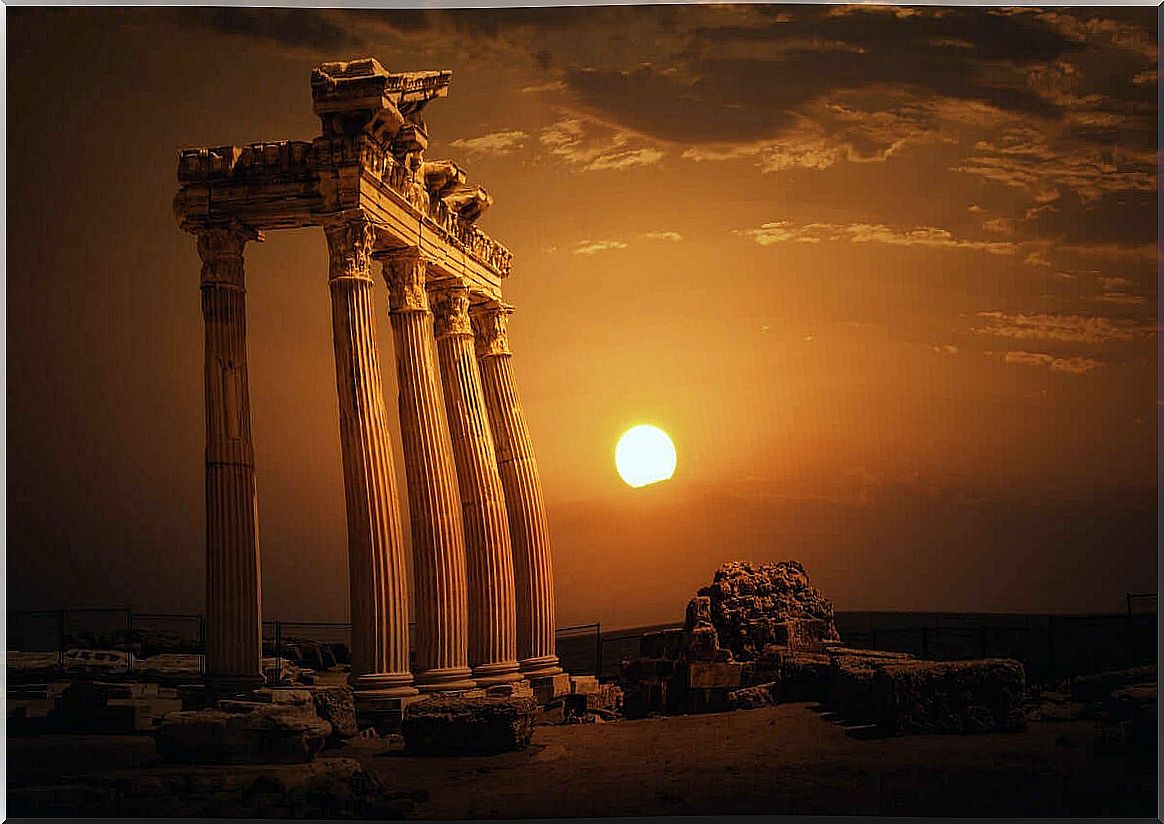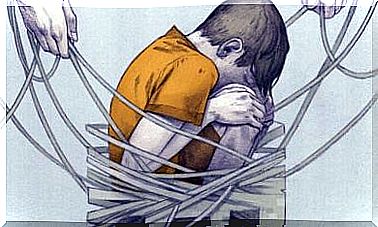The Myth Of Apollo, The God Of Prophecies

The Apollo myth tells about the most revered god of ancient Greeks, after Zeus. He was so important that his cult secretly survived into the Middle Ages. Even today he is known for having followers who still invoke him.
The importance of the Apollo myth comes from the great powers attributed to this deity. He was considered the god of arts, prophecies, bearer of the light of truth and ruler of plagues, epidemics and sudden death, but also of healing and protection against the forces of evil.
Likewise, Apollo ruled beauty, harmony, balance and perfection. He was the initiator of maturity in the young, as well as the protector of shepherds, sailors and archers. Furthermore, he was the supreme lord of archery. Finally, Apollo was d selves of music and poetry, chief of the muses and patron of the Delphic Oracle.

The Origin of the Apollo Myth
According to the Apollo myth, this god was the son of Zeus , the highest authority on Olympus, and of Leto, a titan. Initially, Zeus took an interest in Leto’s sister Asteria and tried to take her by force. She, frightened, turned into a quail to escape the siege. As he continued to harass her, she threw herself into the sea and became the island of Ortygia.
After that, the supreme Olympian god fixed his gaze on Leto, who returned his gaze. She became pregnant, but Hera, Zeus’ legitimate wife , discovered the adventure and began a relentless pursuit against Leto. Hera asked her daughter Ilitia, goddess of childbirth, to prevent the birth. As a result, Leto felt horrible pain for nine days.
However, the gods felt sorry for the Titan. Leto was expecting twins, so the gods allowed the girl, Artemis, to be born and quickly become an adult so that she could help her mother give birth to her brother, Apollo. Artemis was so impressed by her mother’s suffering that she decided to remain a virgin forever.
Apollo, a fantastic being
The siege of Leto did not end with the birth of Apollo. Hera, still furious at the betrayal, sent the snake Python to kill the family. However, the gods, once again compassionate for Leto’s fate, made Apollo grow in just four days and kill the monster.
With a thousand arrows, Apollo destroyed Python, the sacred serpent. Being a divine animal, he had to be punished for killing him. So the Oracle at Delphi was built where the monster died. Apollo became the patron of this place, later to whisper predictions in the ears of the Pythia or seers.
The Apollo myth tells that he and his sister protected their mother to the end, as Hera never stopped chasing her. The twins killed the giant Titius, who tried to rape her. They also killed the 14 children of Niobe, who mocked the Titan repeatedly.

a human god
The Apollo myth says that this god had numerous descendants, but he was unlucky in love. He became interested in Cassandra, to whom he had given a prophetic gift, but she rejected him. Then, he fell in love with Daphne, because of an arrow from Eros (in Roman mythology, Cupid), but she didn’t love him back, so he turned her into a tree.
This myth narrates several episodes that featured the participation of this god. Many of them were acts of violence. One of the most prominent occurred when Zeus ordered the Cyclopes to kill Asclepius, one of the sons of Apollo. In revenge, the god of the arts killed the Cyclopes and was punished for it. Zeus sent him to the mortal world, where he had to live like them and experience their suffering.
Apollo was also a great lyre player and participated in the Trojan War. There he fought alongside the Trojans and helped Paris kill Achilles, just as he had killed his sons Hector and Troilus. This myth passed almost intact into Roman mythology, where Apollo was one of the most respected and admired deities.









